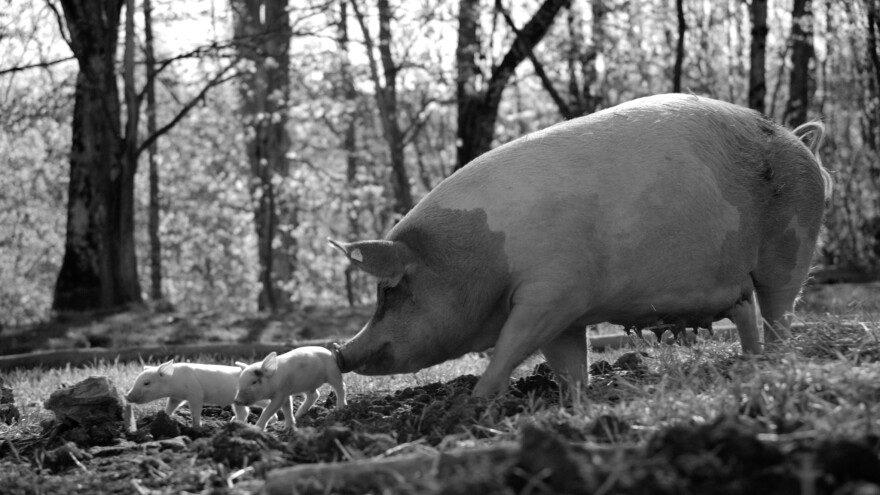For the last review of each year, I always hope for something terrific. This year, I thought about Ma Rainey’s Black Bottom, a film of the remarkable August Wilson play, with Viola Davis and the late Chadwick Boseman. I considered Shirley, a film about the writer Shirley Jackson, played by the fine Elizabeth Moss. But then came Gunda, by Russian filmmaker Viktor Kosakovskiy, that’s as simple and profound as almost any film I’ve ever seen. And also, delightful.
Gunda comes from Norway, but its language is listed as English, which is odd, because the movie includes only animal sounds – pigs, chickens, and cows – all speaking, so far as I can tell, their own languages.
If Norwegian pigs speak differently from others, I cannot discern those differences. But what matters is the eloquence of the movie Gunda.
A literal description may not get to the wonder of this film. It’s simply made up of moving pictures of farm animals: long sequences of a sow and her numerous piglets, starting from when they’re new to when they get a bit older. Cows graze in a meadow, sometimes staring at the camera for long periods of time, often silent and unmoving, and also cows in pairs, front to back so they can brush the flies from each other’s faces. And there’s a sequence of chickens, as they wander from a coop into a field. One of them has just one leg; the film watches her hop laboriously through the grass.
This isn’t much for story, but plenty happens in a viewer as Gunda ambles along. You begin to notice things you usually don’t notice; in a way, you begin to see. The piglets clamber over one another to get to their sow; they struggle to get through or over even tiny obstacles, like tufts of dry grass. You notice the curl of their little tails – they really do look like Porky Pig – and you hear their soft grunts. You can see how the piglets look around – they’re curious about the world they’ve just entered – and how the sow lays on her side, apparently exhausted while her many piglets’ feed.
With the chickens, it’s obvious instantly that in anatomy, behavior and movement, birds are nothing like mammals. Their movements are startling and jerky; their heads turn abruptly; they stretch their necks to look around; and when they walk, their heads undulate back and forth.
But this still isn’t what makes Gunda such a surprise. The film’s like a meditation. If anything, the long slow sequences of the animals – especially the pigs – grow progressively interesting. You notice more and more about how the piglets move around and how the sow gently herds them with a pig version of a mother’s cooing. And your thoughts, as in a meditation, lose their worry and anxiety. Gunda takes you into a peaceful world. There’s no election irritation, no post-election chaos and strife, no pandemic, no climate crisis – at least for these tranquil moments, when the quiet worries are whether that one-legged chicken will make it to the fence, or whether that one piglet late to arrive will get some dinner.
Most of any movie takes place inside the viewer. The story on screen, if there’s a story, is just the start of the personal thoughts that grow within each of us, as are colors and motion. Gunda shaves away the excess. It’s a black and white film with no music and just those touches
of story. And when films give less, if it’s the right kind of less, you might feel ever fuller and richer for the experience. When the movies were first invented in the 1890s, people marveled at seeing the motion of life on screen. It hasn’t changed. Gunda goes back to those first films when every sight shown was a revelation. Gunda is an unexpected, magical, incredibly moving film. And the end is a stunner.






